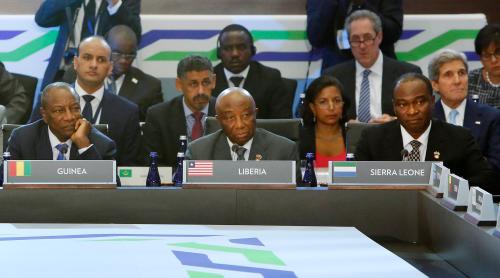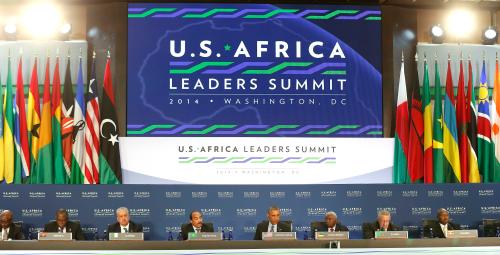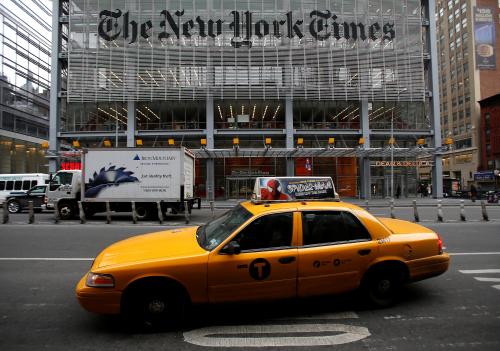This blog is the second of a two-part examination of media sentiment around the continent of Africa. This piece explores the type of coverage—positive or negative—of Africa by three major Western media outlets and how their coverage changed over time. The first piece, on the trends in country coverage by the Western press, can be found here.
“Africa Rising.” “Africa Reeling.” “The Hopeless Continent.” “The Hopeful Continent.” For decades, media outlets have been categorizing Africa in black and white terms of good or bad, peace or violence, poverty or growth. Africans and Africa watchers know that approach ignores the nuance around the region’s progress and obstacles, but are the Western outlets even getting it vaguely right? Has there been an evolution in sentiment around Africa, with opinions of Africa moving from “basketcase” to potential “breadbasket”?
In our first piece on media sentiment in Africa, we examined the increase of Africa in the news as well as the change in topics, e.g., when does China begin to enter the conversation? We then wanted to see what the sentiment around Africa was like: Are articles about Africa mostly positive? Has that changed over time? Using a classic text classification approach and the data from our first piece, we focused on the difference in sentiment when including both the headline and lead paragraph and when only analyzing the headline. Notably, we tested two dictionaries, the Harvard IV-4 General Inquirer Dictionary (H4D) and the Laughran and McDonald Dictionary (LMD), the latter of which has a better correlation with financial metrics.
View information on our data and methodology.
Harvard IV-4 Dictionary: Mixed sentiments and the “editorialization” of headlines
This graph clearly quantifies the “editorialization” of headlines. Headline sentiment is significantly more negative than the sentiment of the lead paragraph, although both exhibit similar trends.
Figure 1. The Economist: Headlines v. lead paragraph sentiment (H4D)

This sentiment is obvious across other newspapers as well.
Figure 2. The New York Times: Headlines v. lead paragraph sentiment (H4D)

Both sentiment plots appear to follow the same trends, but, as with The Economist, headlines are significantly more negative.
Interestingly, The Wall Street Journal is significantly less negative than the other two newspapers. The lowest point of sentiment in the WSJ comes in 2004, with a sentiment index of approximately -0.25, which is commiserate with the low points of The Economist (about -0.3) and the NYT (about -0.2). The WSJ is more positive over the entirety of the data set. The headlines appear to be less editorialized from 1991 through 2000, but the “editorialization” effect appear from 2000 to the final point of the dataset.
Figure 3. The Wall Street Journal: Headlines v. lead paragraph sentiment (H4D)

Laughran and McDonald Financial Dictionary: Less editorialization of headlines, but more negative sentiment overall
We also observe that the Laughran and McDonald Financial Dictionary is significantly more negative than the Harvard General Inquirer IV-4 Dictionary. The low point in the Laughran and McDonald Financial Dictionary weighs in at approximately -0.8, which is far more negative than any of the Harvard scores. There appears to be less of an “editorialization” effect, as there appears to be a minimal difference between the sentiment of the headline and the sentiment of the lead paragraph from this lens.
Figure 4. The Economist: Headlines v. lead paragraph sentiment (LMD)
 Figure 5. The New York Times: Headlines v. lead paragraph sentiment (LMD)
Figure 5. The New York Times: Headlines v. lead paragraph sentiment (LMD)

Our observations from the Economist graph apply to the New York Times as well. Notice the low point of almost -0.8, the tight relationship between headline sentiment and lead paragraph/headline sentiment, and the negativity compared to the Harvard Dictionary.
Figure 6. The Wall Street Journal: Headlines v. lead paragraph sentiment (LMD)

In sum, the Laughran and McDonald dictionary is more negative than the Harvard dictionary in evaluating news on Africa. However, the Laughran and McDonald dictionary demonstrates less sensationalism in headlines; the difference in sentiment between just headlines and both headlines and abstracts is not as severe as the Harvard IV-4 dictionary.
Omid Abrishamchian contributed to this post.






Commentary
Exploring media sentiment around Africa: Positive or negative?
August 14, 2017